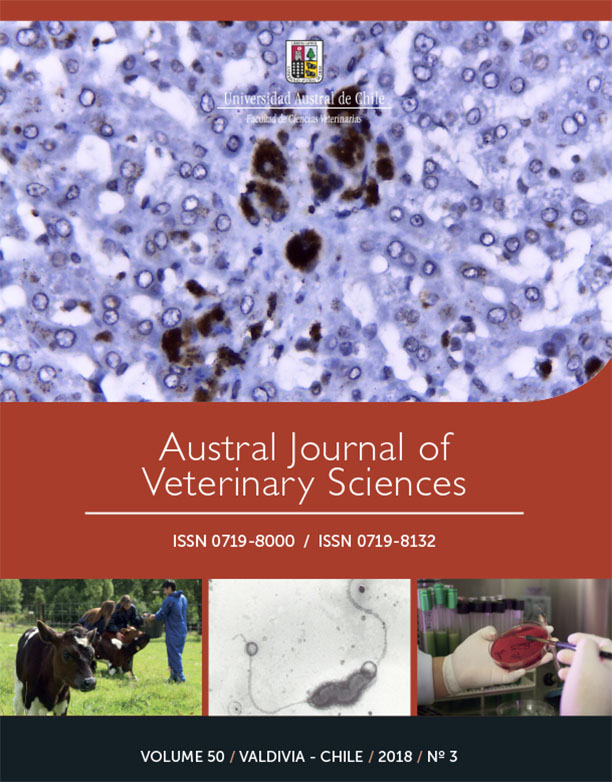Exploratory study on characteristics of oyster shell and eggshell quality in Chile
Contenido principal del artículo
Resumen
This study aimed to characterise oyster shell and white egg shell quality in Chile. The work was based on samples of both oyster shell and eggs, which were sourced from 7 laying farms over a period of several weeks during the production stage. Oyster shells were characterised according to their calcium content and granulometric distribution, and were classified in three types of particles (mm): coarse (≥1.7), medium-sized (0.9-1.6) and fine (≤0.8). Eggs were characterised, according to hen age and farm, by determining their weight, eggshell resistance, and thickness. Currently, Chilean farms use oyster shells whose calcium content ranges from 32.5% to 34.8%, and their granulometric distribution is 51.7% coarse, 27.6% medium-sized and 18.1% fine particles. Thus, the predominant form of oyster shell traded by major companies in Chile is the coarse type of particles, followed by medium-sized and fine particles. Similar calcium contents were observed for oyster shell samples sourced from different farms. Similar weight of the eggs were found for all farms (60-64 g). Contrarily, farms presented different results for eggshell resistance (3,934-5,057 g) and eggshell thickness (0.322-0.376 mm). Eggshell resistance and thickness values were within the expected range for white hen eggs.

